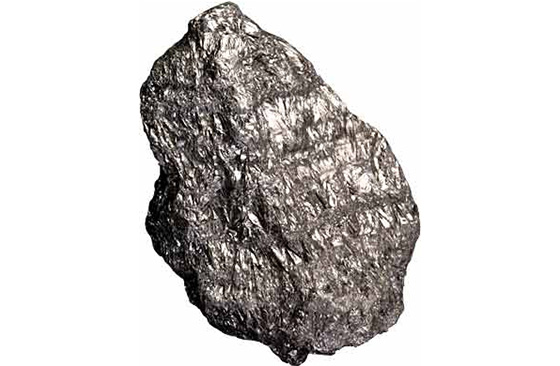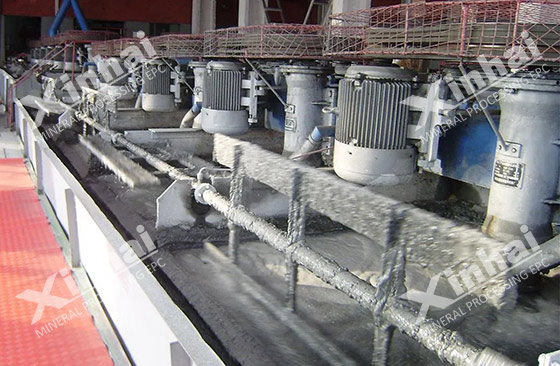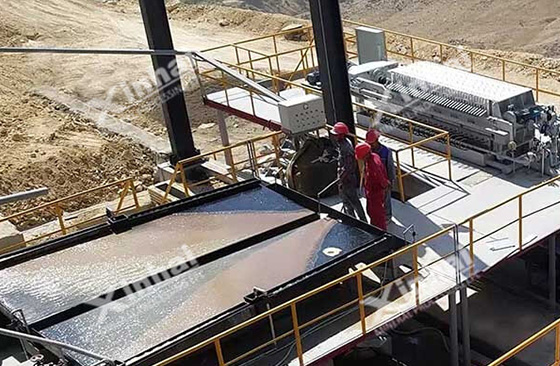Graphite refers to a naturally occurring carbon ore, usually found in metamorphic rocks. Graphite is often associated with quartz, mica and other silicate minerals. Graphite is known for its unique properties, including high electrical conductivity, low coefficient of friction, thermal stability and lubricity. It is widely used in various industries, including battery manufacturing, lubricants, refractories, electrodes, pencils, etc. There are many types of graphite in nature, and their structural characteristics are different, and the applicable beneficiation schemes are also different. The following will introduce you to the main types of graphite and several common beneficiation methods.
Use the table of contents below to navigate through the guide:
013 common kinds of graphite ores
In nature, graphite ores are mainly divided into three types, according to their geological origin and characteristics:

Graphite Flake:
Graphite flake is the most common and commercially valuable type of graphite ore. It appears as flat, plate-like flakes with a typical hexagonal structure. Graphite flakes are commonly found in metamorphic rocks, especially in high-grade metamorphic settings such as gneiss and schist. Graphite flakes have good crystallinity and high carbon content and are suitable for various applications.
Amorphous Graphite:
Amorphous graphite is a graphite ore that has no crystalline form. It lacks the well-defined crystal structure found in flake graphite and takes on a more granular or dense appearance. Amorphous graphite is commonly found in sedimentary deposits and is associated with organic-rich rocks such as coal, shale, and some carbonaceous formations. Amorphous graphite typically has a lower carbon content and is used primarily in applications where high purity is not critical, such as foundry coatings and lubricants.
Veined Graphite:
Veined graphite, also known as massive graphite or crystalline veined graphite, is the rarest and highest quality type of graphite ore. It occurs in the parent rock as discrete veins or lenses, usually in metamorphic settings. Veined graphite has a unique fibrous or needle-like crystal structure, and its carbon content is often as high as 90%. Due to its purity and unique crystal structure, vein graphite is valuable in high-end applications such as crucibles, electrodes and refractories.
These three types of graphite ores differ in mineralogy, morphology, carbon content and purity. The specific type and quality of graphite ore has a significant impact on its suitability for various industrial applications.

026 kinds of graphite ore beneficiation technology
Graphite ore beneficiation technology refers to the method and process of extracting and upgrading graphite from graphite ore. The goal of graphite ore beneficiation is to increase the carbon content of graphite and improve the quality of graphite concentrate for various applications. The following are some commonly used graphite ore beneficiation techniques:
1. Graphite ore flotation separation method: Flotation is a widely used graphite ore beneficiation method. It involves the use of chemical agents to selectively separate graphite particles from other minerals. Typically, graphite ore is mixed with water and flotation reagents such as collectors and frothers to form a slurry. Air bubbles are then introduced, which attach to the graphite particles and float them to the surface for collection.
2. Graphite ore gravity separation method: through the density difference between graphite ore and other minerals, the gravity separation method is used to separate graphite particles from other minerals. Gravity separation of graphite ore is realized by technologies such asshaking table, spiral concentrator and centrifugal concentrator.

3. Graphite ore acid leaching method: Acid leaching is a method of treating graphite ore with acid solution to remove impurities and increase carbon content. Acid leaching can effectively remove non-graphitic minerals and improve the purity of graphite concentrate.
4. Graphite ore heat treatment method: Heat treatment, also known as thermal sublimation or annealing, places graphite ore under high temperature conditions in an inert atmosphere. This process helps remove impurities and enhances the crystalline structure of the graphite, resulting in higher carbon content and improved quality.
5. Graphite ore electrostatic separation method: Electrostatic separation uses the difference in conductivity or surface charge properties of graphite and other minerals to separate. The separation process is achieved using an electrostatic separator.
6. Graphite ore combined beneficiation method: In beneficiation practice, beneficiation plants usually use different combinations of the above-mentioned beneficiation technologies to optimize the beneficiation process and improve the quality and purity of graphite concentrate.
The above content is the common types of graphite ore and beneficiation technology. The selection of appropriate beneficiation technology depends on the characteristics of graphite ore, including its mineralogical characteristics, particle size distribution, impurity content and desired product specifications. Each beneficiation method has its advantages and limitations, and the selection of an appropriate technology should take into account factors such as cost, efficiency and environmental impact. Xinhai Minerals recommends mineral processing test analysis in order to determine the appropriate graphite mineral processing solution.


 marketing@ytxinhai.com
marketing@ytxinhai.com  0086 13810327080
0086 13810327080 






































































































 CHAT
CHAT MESSAGE
MESSAGE





